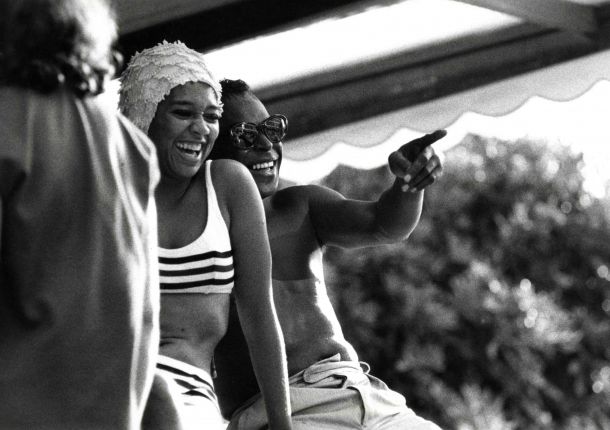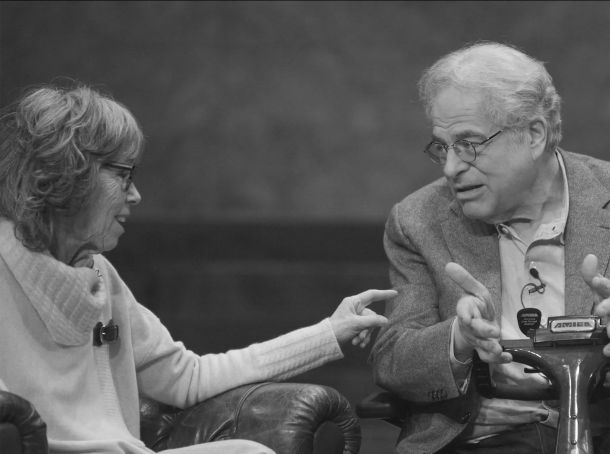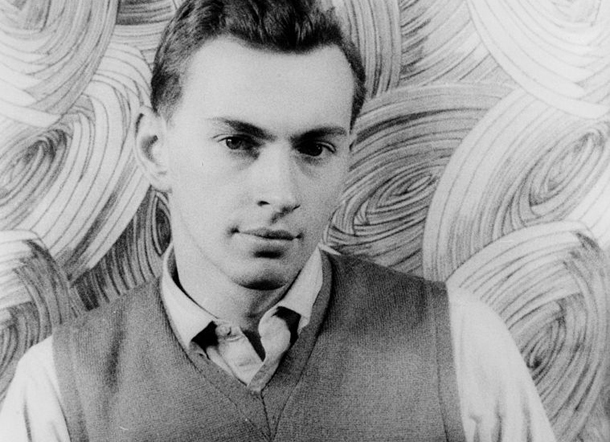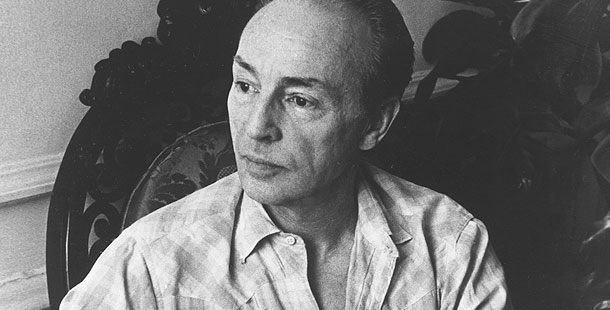Creativity is not always a solitary act. With Valentine’s day here, we’re reminded of great creatives who found inspiration or a collaboration partner in a “muse,” often but not always a person (or object) they loved. In this spirit of romance and inspiration, here are 6 “muses” behind the masters:
Trumpeter Miles Davis and His “Best Wife”
Miles Davis was gifted, passionate and charming, but also volatile. Married three times, Davis’ relationships to women were complicated, sometimes pained by jealousy, and even violence. Of his wives, it is perhaps dancer Frances Taylor who was the most influential on his art during some of his most groundbreaking work. Taylor, a successful performer herself, was featured on several of Davis’ album covers, such as “Someday My Prince Will Come.” Davis wrote she was “the best wife I ever had.” Despite a shared passion for style and performance, their marriage was tumultuous, and Taylor was a victim of domestic abuse. On loving Davis, Taylor said:
“I fell in love with his sound. It got to me . . . How can someone come up with such beautiful music when he can have that other side? . . . I don’t regret, I don’t forget, but I still love.”
Miles Davis: Birth of the Cool by Stanley Nelson premieres on PBS February 25th at 9 p.m. (check local listings) and will stream free on our website.
Violinist Itzhak Perlman and His Partner in Love and Music, Toby
Violinist Itzhak Perlman is talented, funny, irreverent and self-deprecating, but few know his devoted wife of 50 years, Toby. Itzhak and Toby’s lives are dedicated to their large, loving, Jewish family in NYC and their continual support of young musicians. Together, they founded the Perlman Music Program for young string players. In our film ITZHAK, Toby says it’s their mutual love of music which binds them:
“When we met, the common thing for us was the music. We learned a lot from just spending evenings listening to records . . . Music gives us permission to dream and out of our dreams sometimes something important happens, it gives us permission to feel, to be human.”
Painter Andrew Wyeth and His Neighbor Christina
The painter Andrew Wyeth’s most famous work “Christina’s World” is also one of the best-known American masterpieces of the 20th century. Our film Wyeth explores how the painter drew inspiration from a real person, his polio-afflicted neighbor Anna Christina Olson. Entranced by the woman’s spirit, Wyeth featured Olson in other paintings, such as “Christina Olson.” On painting her, Wyeth said:
“The challenge to me was to do justice to her extraordinary conquest of a life which most people would consider hopeless.”
Wyeth also had a secret muse, the German model Helga Testorf, who he painted secretly for 15 years. Wyeth finally revealed a considerable body of intimate work featuring Testorf in 1986. The story was such a controversy it made the cover of both Time and Newsweek. Why did Wyeth keep his model a secret? He said:
“I’d been painting houses, barns, and all of a sudden I saw this girl, and I said, ‘My God, if I could get her to pose, she personifies everything I feel. And that’s it. I’m not going to tell anyone about this. I’m just going to paint it.'”
Chef Julia Child and her Husband Paul Child
Julia Child famously said “I was 32 when I started cooking; up until then, I just ate.” What changed for the celebrated chef, author, and television personality? She met Paul Child, the man who would become her husband, mentor, and business manager. Their paths crossed in Sri Lanka, where Julia Child volunteered as part of the 1944 war effort. Paul was an artist, a poet, well-traveled, and spoke flawless French, yet it was not love at first sight. Shortly after their first encounter, he described Julia as “wildly emotional” and “an extremely sloppy thinker.” Equally unimpressed, she described his appearance as “hair which [was] not on top, an unbecoming blond mustache and a long unbecoming nose.”
Slowly, the two fell quietly in love, and by the summer of 1946 they were traveling the world together. En route to Paris, Paul took Julia to the oldest restaurant in the country, La Couronne. Her first taste of classical French cuisine changed her:
“The whole experience was an opening up of the soul and spirit for me . . . I was hooked, and for life, as it turned out.”
Under her husband’s tutelage, Julia studied French, roamed the open air markets, and scoured Paris for bistros. Her palate grew more sophisticated, culminating in the famed PBS show “The French Chef.” Though Julia’s on-camera presence was relaxed, reassuring and informal, beneath the quirky charm was a driven perfectionist. Working closely with Paul, Julia spent up to 19 hours preparing for each half-hour segment. Behind her magnetic persona, Paul acted as her manager, photographer, recipe tester, proof-reader and companion for years.
Author Gore Vidal and his Unorthodox Muse
Gore Vidal was a novelist, essayist, playwright, and provocateur whose career spanned decades. In addition to a sequence of seven novels about American history, and satirical novels such as Myra Breckinridge, he wrote dozens of television plays and film scripts.
How did Vidal summon inspiration? In an interview with the Paris Review (by Gary Clarke, 1974), he said:
“First coffee, then a bowel movement. Then the Muse joins me.”
Deborah Dickson, the director of our 2003 film The Education of Gore Vidal, also commented on his other influences:
“Gore Vidal’s initial influences were Petronius and Apuleius (The Golden Ass). They gave him the ‘courage of example’ to be humorous and satirical . . . After that, he was influenced by Henry James and Mark Twain.”
Ballet Choreographer George Balanchine and Dancer Tanaquil Le Clercq
Tanaquil, who went by the name Tanny, was a student at the School of American Ballet when she caught the attention of choreographer George Balanchine. Her tall and thin body was unusual at the time for a ballerina, but her talent and personality led her to become the muse of both Balanchine and Jerome Robbins.
Pat McBride Lousada, a former New York City Ballet member and contemporary of Le Clercq’s remembered:
“[Balanchine] went for people who had a strong personality on stage. Those were the ones that became his muses.”
In this excerpt from our film Tanaquil Le Clercq: Afternoon of a Faun, see Le Clercq perform in Concerto Barocco, a Balanchine masterpiece choreographed to the music of Johann Sebastian Bach. You can also read excerpts from the passionate letters between Le Clercq and Jerome Robbins here.





